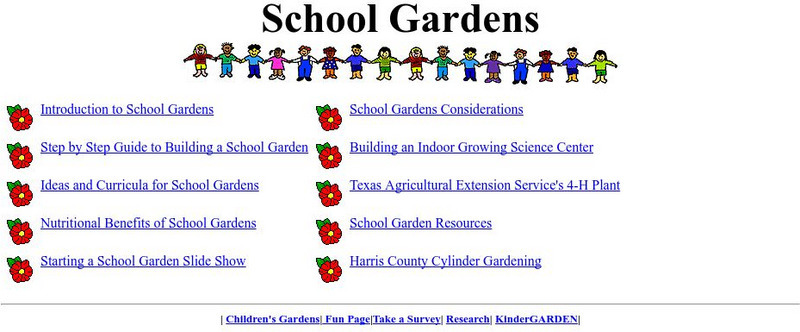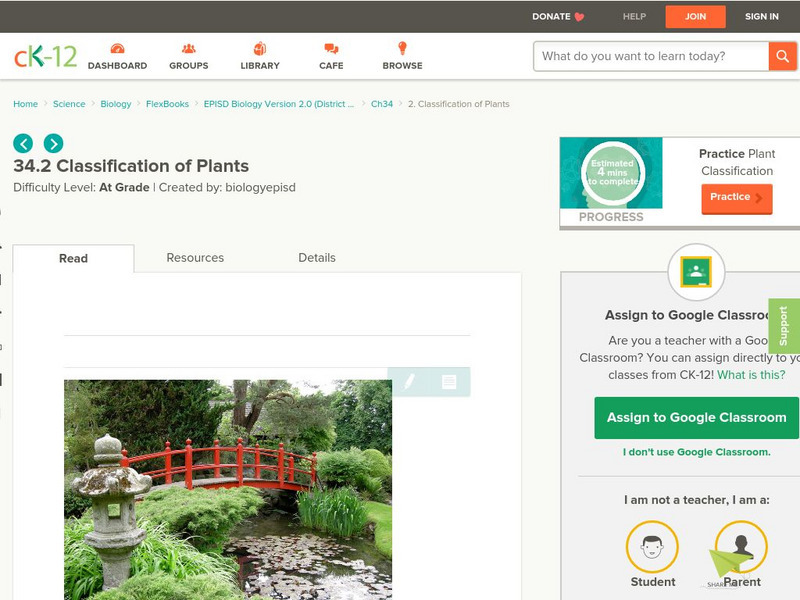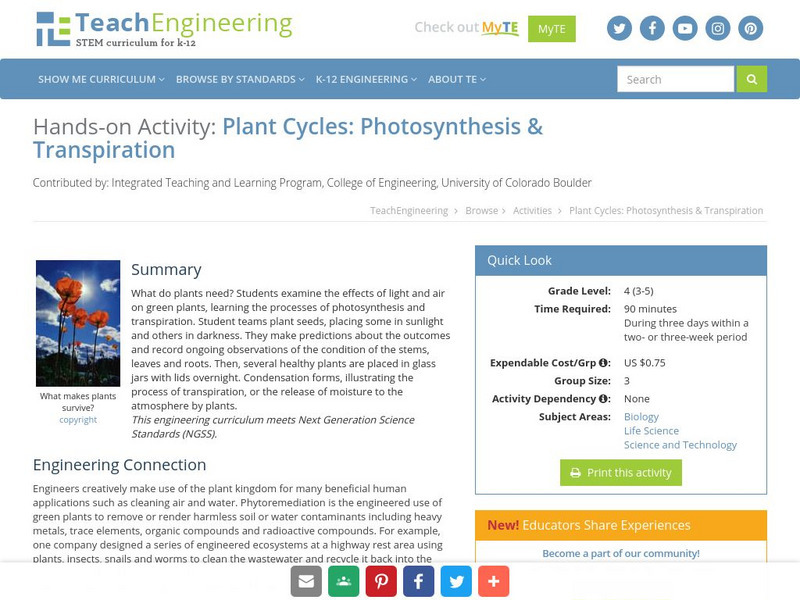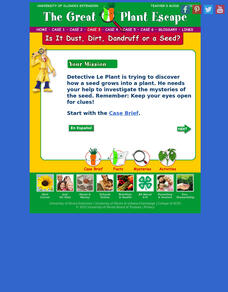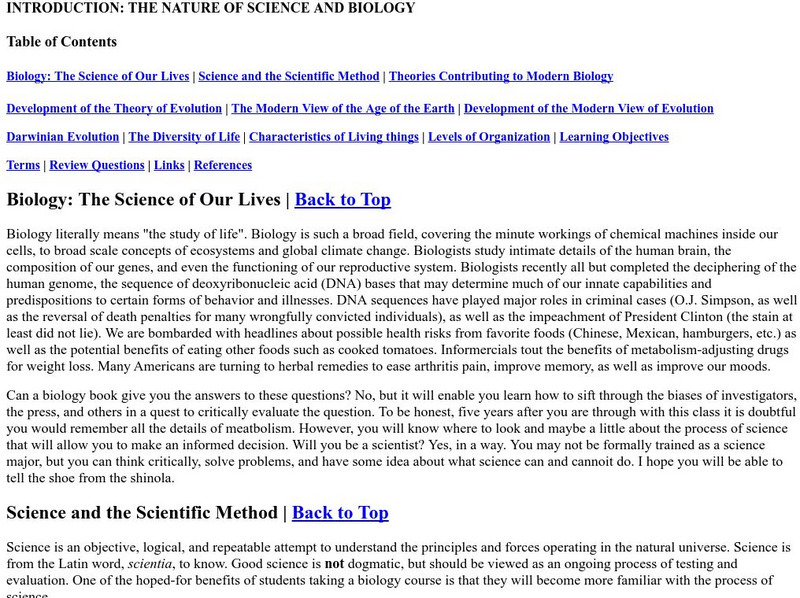Curated OER
Plant Activities: To Dye For
Students use natural plant dyes to color their clothing as they did in the past.
Yale University
Yale Peabody Museum
This home page describes what the museum has to offer. Links to the exhibits and more information is provided at the bottom of the site.
University of Maryland
University of Maryland: Plant Biology
A webpage for a course on plant biology for non-science majors. The course covers how plants function, diversity among plants, and the roles of plants in the environment. Site includes lectures, a plant project, and a sample exam.
Institute for Dynamic Educational Advancement
Web Exhibits: Causes of Color
Why are things colored? This site explores the 15 phenomena that create our colorful world. Learn how light is made, lost, and moved!
Other
Stephen Foster Austin State University: Sfa Mast Arboretum
This resource contains a number of different categories with information about the Stephen Foster Arboretum.
Other
Kansas Wildflower and Grasses
A list of Kansas Wildflowers and Grasses. Includes photos and information.
Texas A&M University
Aggie Horticulture: Kinder Garden: School Gardens
Get all the information needed to begin and maintain a school garden and a composting program. Features include step-by-step slide shows for creating a school garden or compost program.
Smithsonian Institution
National Museum of Natural History: Department of Botany
Visit the Smithsonian's Department of Botany, and search online from the specimen collection of nearly 800,000 plant specimen records. In addition, learn about research being conducted, activities and events hosted by the department,...
CK-12 Foundation
Ck 12: Episd: Plant Classification
[Free Registration/Login may be required to access all resource tools.] Understand how plants are classified and be able to identify vascular and nonvascular plants.
CK-12 Foundation
Ck 12: Episd: Classification of Plants
[Free Registration/Login may be required to access all resource tools.] Identify and understand the system used to classify plants and the difference between vascular and nonvascular plants.
CK-12 Foundation
Ck 12: Episd: Plant Adaptations
[Free Registration/Login may be required to access all resource tools.] Recognize and explain how plants adapt to their environments.
TeachEngineering
Teach Engineering: Plant Cycles: Photosynthesis & Transpiration
What do plants need? Students examine the effects of light and air on green plants, learning the processes of photosynthesis and transpiration. Student teams plant seeds, placing some in sunlight and others in darkness. They make...
Other
Wild About Gardening: Encyclopedia
Get information on 575 different plant species using the WILD About Gardening Encyclopedia. Information is provided and can be searched under the following categories: Scientific Name,Common Name, Plant Type, Native Province, Zone,...
Science Buddies
Science Buddies: Home Sweet Biome: How Do Plants Grow in Different Environments?
In this science fair project you will learn about biomes and how different climatic conditions affect plant growth. This can explain why some plants and animals are similar in different areas of the country, and in other parts they are not.
Texas Education Agency
Texas Gateway: Investigating and Comparing Life Cycles
Learn about plant and animal life cycles through this 5E structured module.
University of Illinois
University of Illinois Extension: The Great Plant Escape Parts of a Seed
Help Detective Le Plant discover how a seed grows into a plant. Students will learn to describe a seed's structure and what's needed for seed growth.
OpenSciEd
Open Sci Ed: 7.4 Matter Cycling & Photosynthesis
This unit on matter cycling and photosynthesis has students investigating the idea that all food comes from plants.
Concord Consortium
Concord Consortium: Stem Resources: Plants
Investigate how plants eat with these interactive science simulation.
Biology Pages
Kimball's Biology Pages: Plants
RCN offers information about plants, including the evolution and classification of different groups.
E-learning for Kids
E Learning for Kids: Science: Caribbean Sea: Pirates: What Are Some Common Habitats?
Pete is shipwrecked and exploring environments around him. Want to join him as he learns about plant and animal habitats?
University of Kansas Medical Center
University of Kansas Medical Center: Cell Structure
Discover microscopic images of various eukaryotic cells, both plant and animal.
Estrella Mountain Community College
Online Biology Book: The Nature of Science and Biology
Use the scientific reasoning and critical thinking to take an in-depth look at the basics of biology.
National Institute of Educational Technologies and Teacher Training (Spain)
Ministerio De Educacion: Clasificacion De Los Seres Vivos
All known form of life gathers in large groups, which are called kingdoms. This site provides a thorough overview of the five kingdoms with many illustrations. The lessons contain 15 interactive activities.








